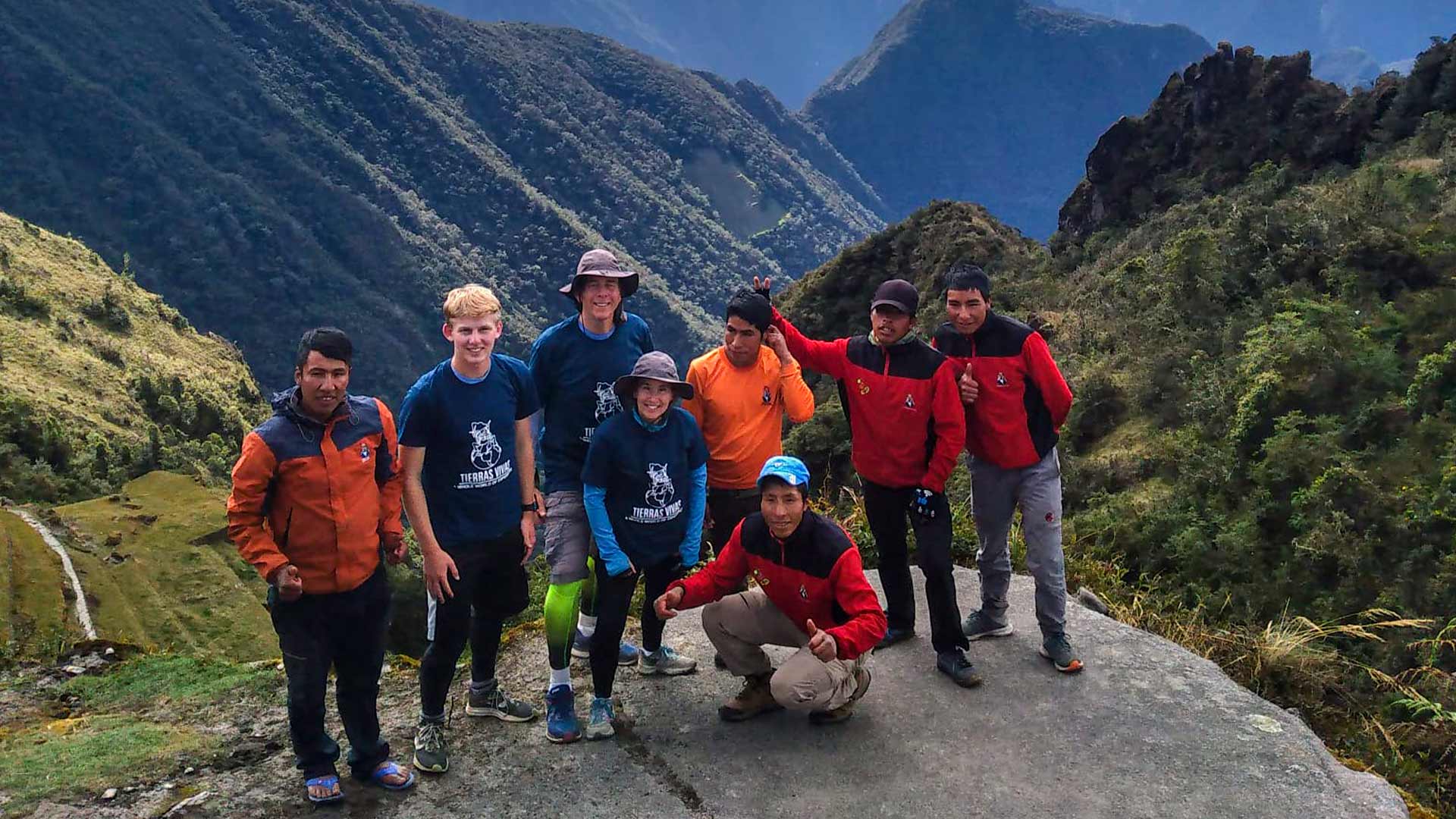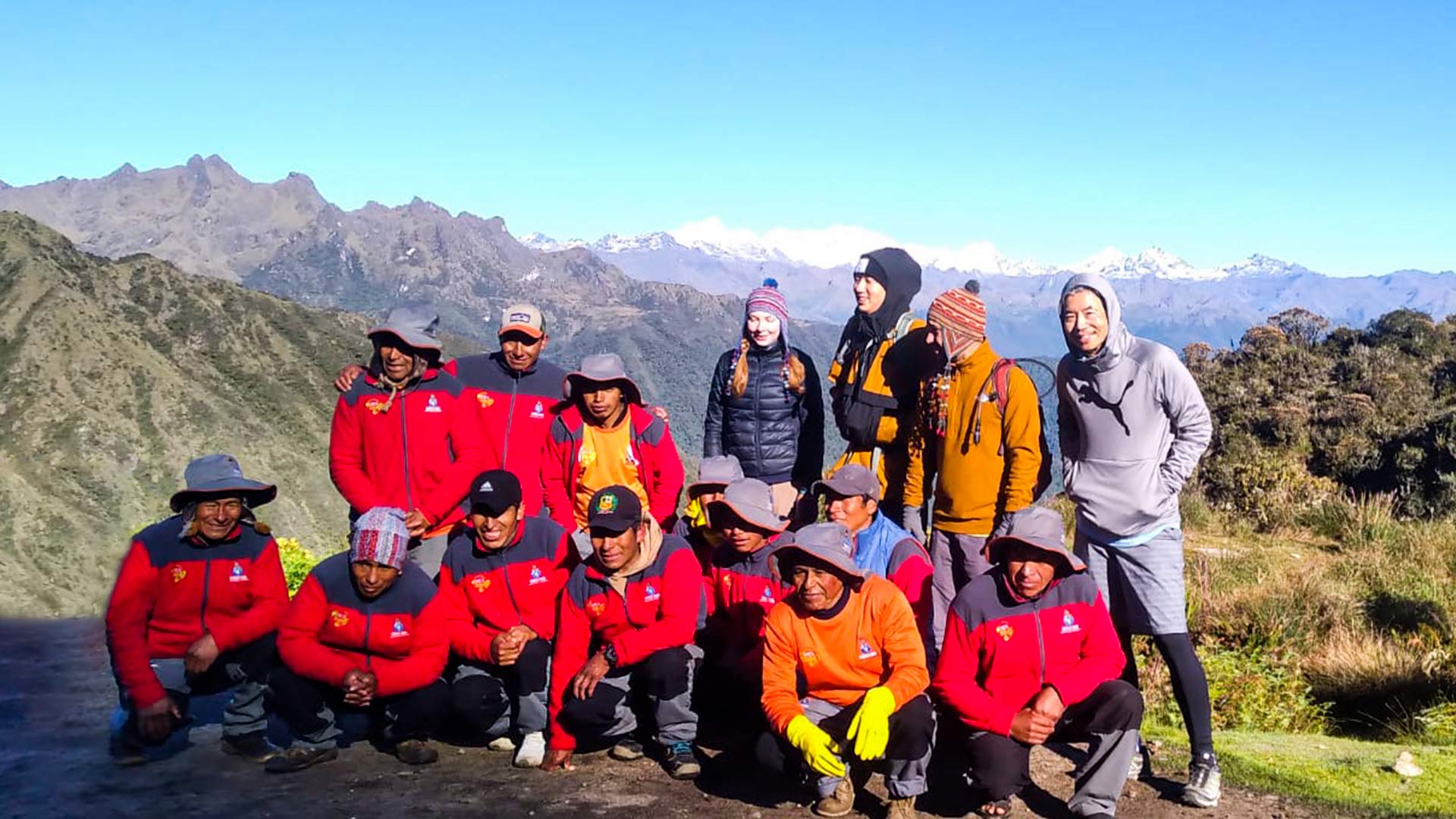Every year, thousands of people do the Inca Trail. They usually complete the 43-km trail in 4 days. For most of them, the trip is their lifetime experience and fulfillment of their personal ambitions. The satisfaction of having completed the trek and visiting the spectacular Incan city of Machu Picchu is hard to beat. Although, this feeling is even better if you know that all porters helping you along the way have been treated well and with the respect they deserve. Now, most of trekkers are organized by a local tour operator. No draughts are allowed to enter the Inca Trail, only porters. For that reason, all camping equipment (i.e. personal tents, dining tent, kitchen tent, tables, chairs, stove, bottle gas and food) is carried on backs of human porters. Prices of this 4-day trek vary significantly depending on porter's and other staff's wages and conditions provided by each company. However, if you try to find out if a company looks after their porters well, it can be quite difficult as porters can be instructed to tell you they receive more than they really do. They are also afraid to not lose their jobs.
In November 2021, a new law was introduced that have improved porter's working conditions dramatically!!
The law came into force due to many years of exploitation!! New minimum wage for all porters was set to S/75 (U$ 22 dollars) per day.
In 2022, the wage increased to 163.30 Soles (USD 45) per day. All tour operator are obligate to enforced.
New maximum weight that a porter can carry was limited to 20 kg (15 kg of load + 5 kg of porter´s personal items). All porters have a weight carried checked by government officials at checkpoints of the trail.
Ensure that your porter is fully loaded when he is being weighed at the checkpoints. Some of the worst companies restrict the amount of personal items, which a porter can take with him, imposing upon his personal allowance of 5 kg. Most of porters are afraid that if their blankets are too heavy or they have packed too many warm clothes, they exceed the 20 kg weight limit and receive a fine, which a travel agency then deducts from their wages. Obviously, a decent travel agency does not practice such activities!!
Tierras Vivas DOES NOT permit this exploitation!! We guarantee that our porters carry only an amount given by the Peruvian law!! There is still a long way to go when it comes to a reserve of adequate meals, backpacks and warm dry sleeping accommodation. Tierras Vivas works with porter´s laws, Tierras Vivas provides all equipment to the porter to hike to Inca Trail as you will see when you hike with us.
Table of Contents
- New Inca Trail Porters 2025 Law
- How does the law regulate the work of the Inca Trail porters?
- How you can help to Porters
- Meals and sleeping conditions
- Porter's culture
- How much to tip?
- How long does it take to do the inca trail
New Inca Trail Porters 2025 law
The new law requires that the new salary that porters make for an entire four-day trip is 168 USD, which is more than double what they earn in 2022. Also, Tour operators must provide porters with a health insurance plan, AFP (pension fund), and provide an accident insurance policy.
How much is the payment that the porters receives?
According the new Peruvian law N° 27607-2022, the porters should receive the following payment:
| Trekking Chef | Per Trip | Per Month |
| Trekking Chef Job: 8 hours + AFP (Pension Fund) | S/ 717.60 | S/2152.80 |
| Health Insurance | S/193.75 | |
| Life Insurance | S/ 55.00 | |
| Work risk insurance | S/ 60.00 | |
| Total: | S/2461.55 | |
Total in U$ 703.30 per Trekking Cook
| Porters | Per Trip | Per Month |
| Porters Job: 8 hours + AFP (Pension Fund) | S/ 552 | S/ 1656 |
| Health Insurance | S/149 | |
| Life Insurance | S/ 55 | |
| Work risk insurance | S/ 60 | |
| Total: | S/1915 | |
Total in U$ 547.14 per porter
How does the law regulate the work of the Inca Trail porters?
Among other aspects, the regulation considers the following points.
- The weight that the porters must carry is regulated at 20 kg, which is controlled during the journey.
- It is determined that the porters unionize and treat their salaries at this level, which must be in accordance with the law.
- They must be provided with adequate equipment to transport things, such as: jackets, backpacks, head protection, suitable shoes, among other implements. As for the shoes, the porters hardly wear rubber sandals, called «flip flops», many of them have worn flip flops since they were children and in many cases it makes them uncomfortable to wear shoes.
- The porter must be registered in the Inca Trail Porters Registry, for this purpose they must present a Criminal Record Certificate and a Health Card.
- The porters must be trained for their own safety, as well as for the Travel Agencies.
- The tour operator should have to provide the health and life insurance during the work
- Tierras Vivas tour operator complies with all the requirements established by the Regulation.
How you can help to Porters:
- Hire a personal porter: This will make your trek more enjoyable giving you time to enjoy surrounding scenery. You will also provide a job to a person who really wants and needs a work.
- Interact with your porters:Talk to your porters, learn about their traditions and villages. Share some coca leaves. Even ask them to sing some of their local songs. Most porters suffer from low self-esteem so make the first move, do not wait for them to talk to you first.
- Thank your porter: Show your porters that you appreciate their work. Thank them verbally and by a tip as well.
Meals & sleeping conditions:
The biggest difference between a responsible company and an irresponsible is how they look after their porters on the trek. Many porters are given very little to eat on the trail. They have to wait to see how much tourists have eaten before left-overs are divided up amongst them. Many porters end the trail tired and hungry. In general, porters sleep together in the group dining and kitchen tents. This is fine since there is warmth in numbers. However, when you are on the trek, remember not end up talking all night in the dining tent as there might be tired and cold porters waiting outside to go to bed. You may also notice that very few dining tents have integral floors to keep out the cold and damp. When it rains the floor can become like a river running through the tent. Very few porters have sleeping mats or even warm sleeping bags. They usually put one blanket on the ground and cover themselves with another one.
Porter's culture:
Quechua's (native Andean) people have a history of being down-trodden, first by Incas, then by Spaniards and then by landowners. Thanks to recent reforms, some Quechua's people possess their own land, but just a few of them. Due to their long history of being dominated by others, they have mostly a low self-esteem. It is important to try to involve them into your group. So take some coca leaves and share with them. You can also try to learn a couple of basic Quechua's words (your Tour Guide will be pleased to help you). Many of porters have amazing stories to tell about their traditions and life in their villages. At the end of the trek, do not forget to show them that you appreciate their work and thank them verbally as well as by tipping them.
How much to tip?
Tipping your Tour Guide or Cook should depend on quality of the service. If their tips are consistently poor, then they soon get a message they need to improve. However, even if the food was terrible and the Tour Guide spoke no English (which we hope will not be the case!), the Porters were probably still working hard carrying all camping equipment, so please do not forget to give them a tip. The amount you pay depends on you. Usually, it is recommended to tip every Porter with 30-35 soles (it is a combined tip from everybody in your group). Try to take plenty of small change so that you can tip Porters directly. This is much better than giving money to your Cook or Tour Guide to be divided later as this is distributed unfairly. Be careful of over-tipping also as it can be often as bad as not leaving any tip. If a Porter receives a large tip, he usually ends the trail. they will take the money to the families.
How long does it take to do the Inca Trail?
The time of travel varies depending on the tour that takes place there are different tours that are:
- Classic Inca Trail Tours - last 4 Days
- 2 Day Inca Trail Tour - last 2 Days
- 2 Day Inca Trail with Camping - last 2 Days
- 3 Day Inca Trail - last 3 Days
- Hiking the Inca Trail to Machu Picchu 5 days - last 5 Days
Alternative trek to the Inca Trail tours
Many are the routes that take you to Machu Picchu, but none is like the Inca Trail Tours, the most famous pedestrian path in the Americas. After flying from the capital of Perú, Lima, you will arrive in Cusco to walk for four days along a path through forests and dense fog, millenary stone steps and discovering the ruins of ancient fortifications and Inca cities, and all the time enjoying majestic views.
- Salkantay Trek to Machu Picchu 5 days
- Inca Quarry Trail 4 Days
- Vilcabamba Hike to Machu Picchu 6 days
- Choquequirao trek to Machu Picchu 9 days
- Ausangate trek 7 days
If you want to visit Machu Picchu, we recommend you to book your Machu Picchu Ticket in advance, so you will enjoy your Vacation in Machu Picchu without any problem.
When is the best time to hike the Inca Trail?
The best season is during the dry season, which covers the months April to the end of September. In October the rains begin and you can find Machu Picchu covered by clouds. If you travel in June, we recommend you to book the Inti Raymi 2025 Tour that takes place in June 24th, and also hike the Palcoyo Mountain Tour, which is an incredible Rainbow Mountain located in the Andes.








